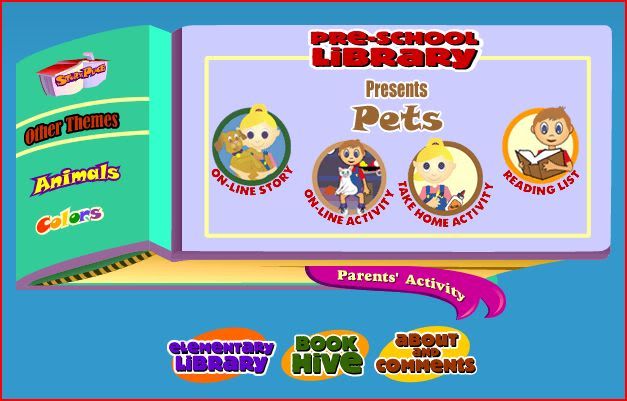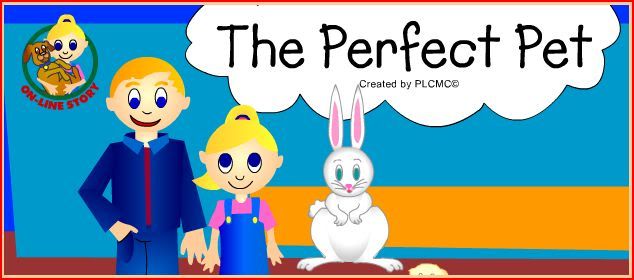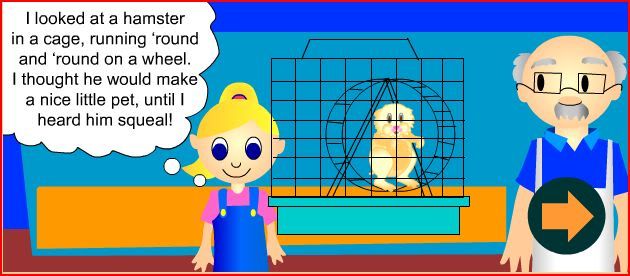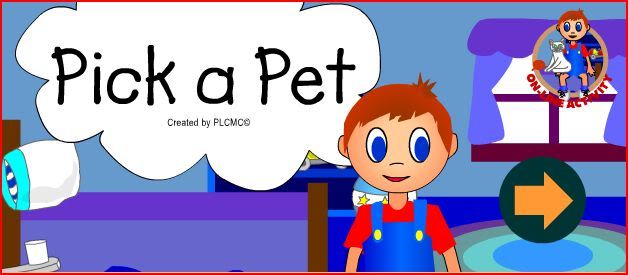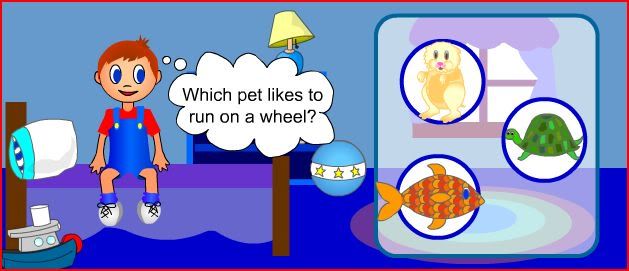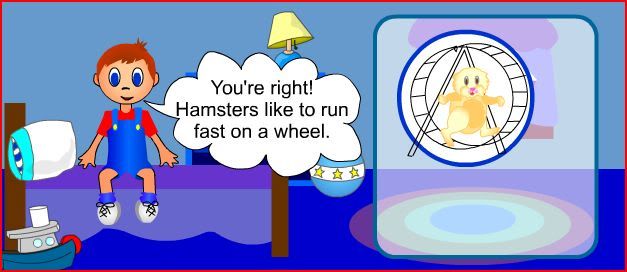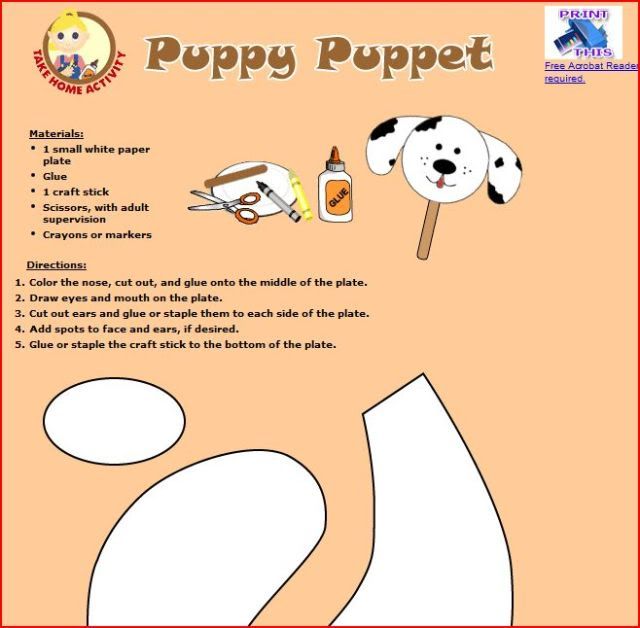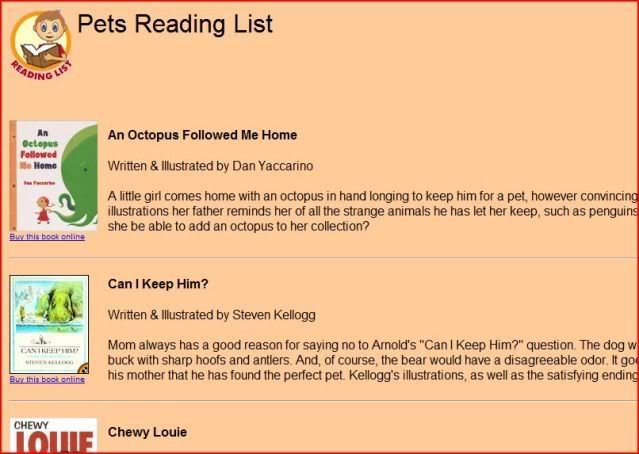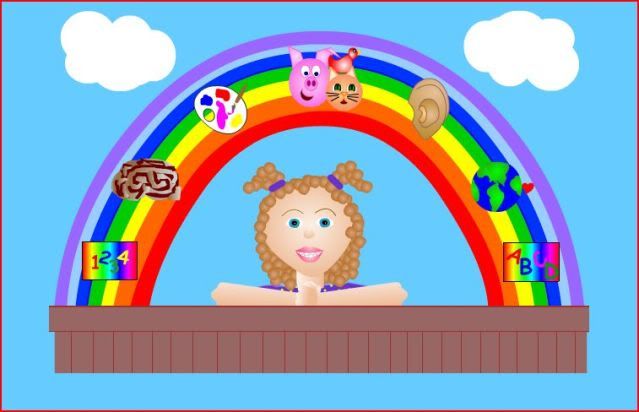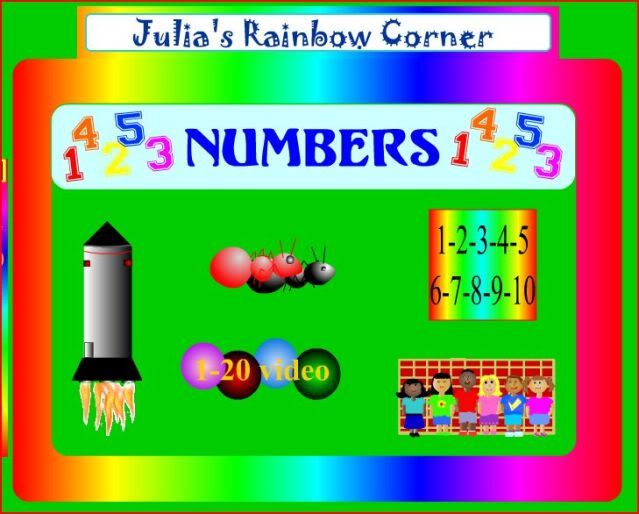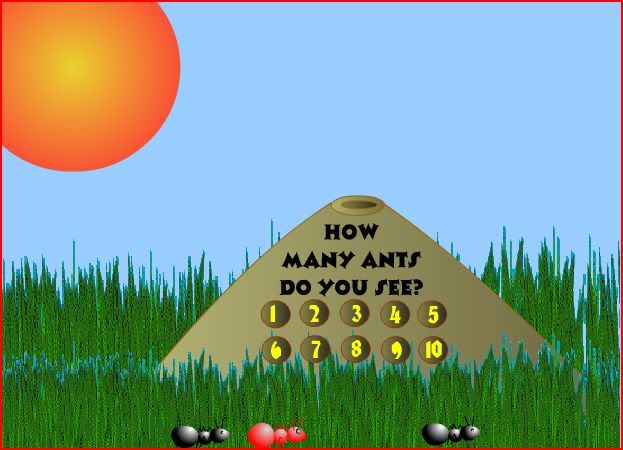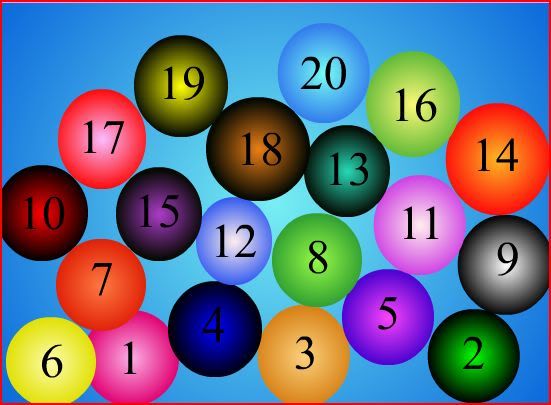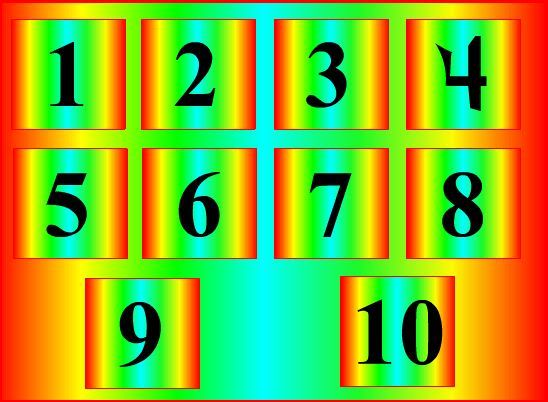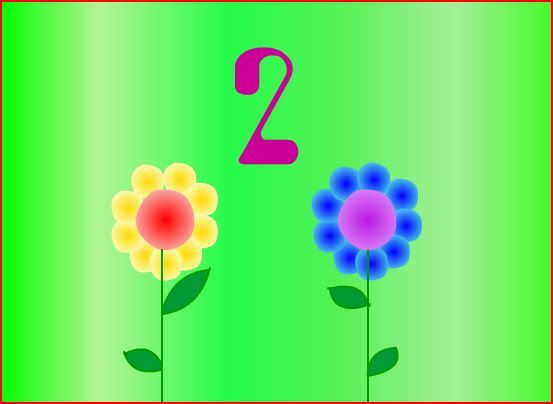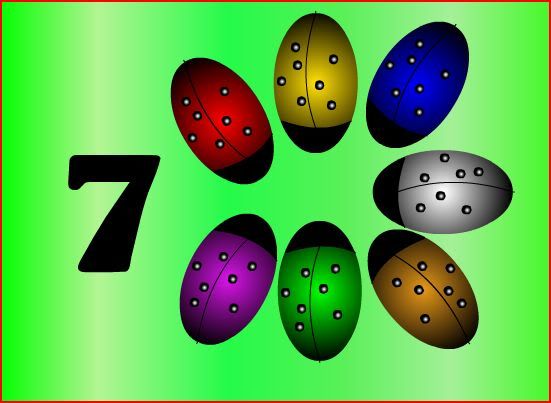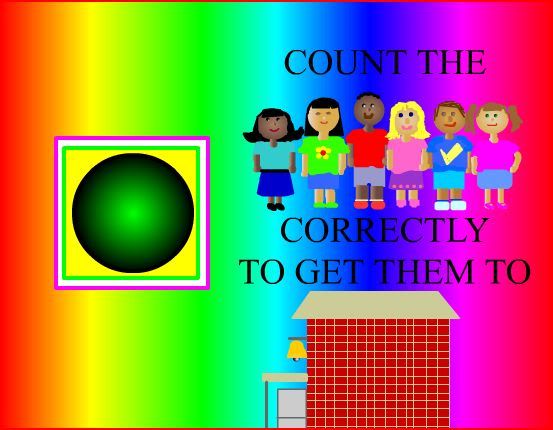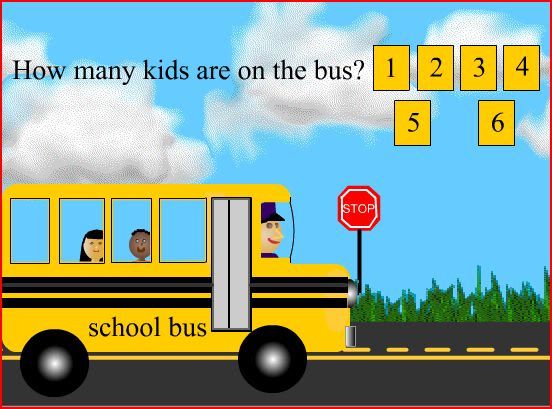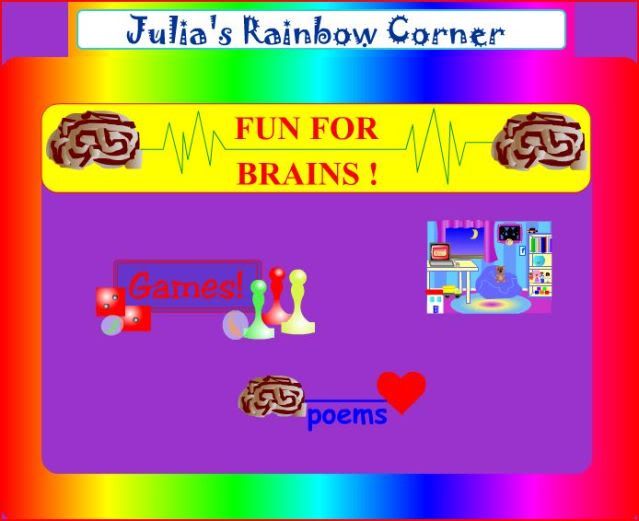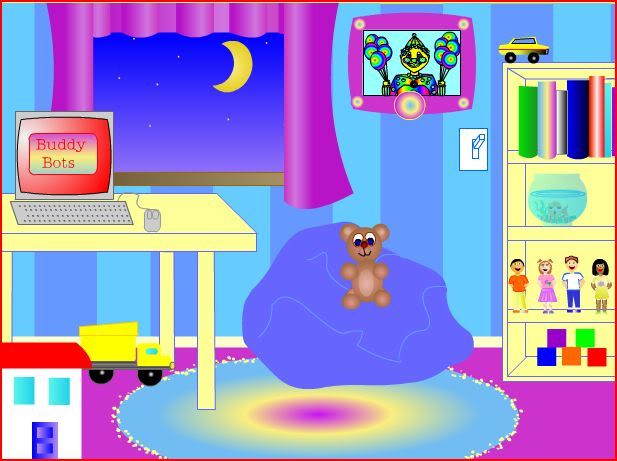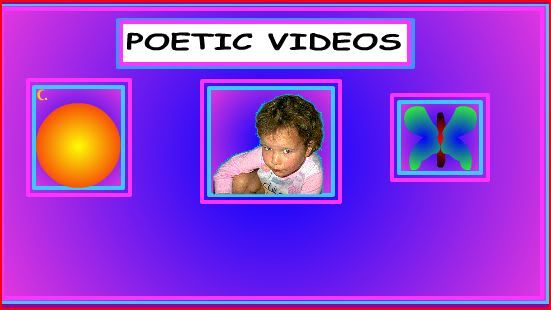

Dip. in Leadership
Dip. in Teaching
NgeeAnnPoly ECH Graduate 2012
Currently Teaching @ Technology Child Development Centre
Nursery 2 Class
Email/PersonalBlog
Tuesday, June 8, 2010
The second website i found was Storyplace! At this website, the children can choose from many different Themes. Some of the themes are animals, babies, bath time, colours, crocodiles, fire-fighters, fish and many more. The theme i chose was Pets. At each of the themes, there are 4 activities for the children to choose from. Online story, online activity, take home activity and reading list.
First of, the online story corner. The story for the Pets theme is 'The Perfect Pet'. This online story is fully animated with voices as well as images. All the child has to do is to click on the arrow to continue to the next part of the story. I feel that this is suitable for children young and old. The older children can read the words themselves whereas the younger children can just listen to the voice telling the story.
Next off would be the Online activity. The children will be asked question about Pets. The question i was asked is 'Which pet likes to run on the wheel?' I clicked on the hamster, and the animations showed the hamster running on the wheel.
I feel that this activity is very interesting for children aged 5 - 6, generally the older children in preschools. The questions can be quite tough for children aged 4 and below. As children aged 4 and below still do not understand the concept of how certain animals move, it may be difficult for them to answer the questions.
The following corner would be the Take Home Activity corner. Over here, the children are given things to print and do at home. As for the Pets theme, the activity is about printing out a page, cutting it out and making your own puppy puppet.
Moving on to the last corner, the Reading List. Over here, the children are given a list of books (with vivid descriptions) all about Pets.
For the Pets theme, there are 7 different books to read, ranging from the easy ones for toddlers and the harder ones for the older children.
This wraps up Storyplace preschool library.
Rating on the activities:
Colours
4/5
Some warm muted colours as well as bright colours. Good mix of colours. However, at some games, the colours start to get abit too bright and overwhelming.
Animation quality (Realism)
4/5
Animations are of good quality at the main menus. At the games section, the quality is not as good.
Context (Font size, Font, etc)
5/5
Font size and font used are both of appropriate style and size
Layout (Navigation)
2/5
There is no sidebar for easy navigation. The children have to press 'Back' in order to return to the previous page. Hassle for children.
Instructions (Rules, etc)
3/5
Rather clear and precise instructions, especially during the game
Educational Purposes
4/5
Definitely has a positive impact on the children's learning
Overall Rating:
22/25
Monday, June 7, 2010
The first educational web activity(game) i found on the web would be at Julias Rainbow Corner. The website includes games, goodies for kids, parents area and an area called Fun4Brains.
Starting off with the games corner, (Fun&Games). There are 7 different topics for the child to
choose from.
First off would be the Numbers corner. (Numbers!) There are 5 different games for the children to choose from.
The first game would be 'Blast Off!'. At this game, the children will have to click on 'Go!' and the countdown from 10 to 1 will begin. At this page, the children can click anywhere in the page and there will be a voice that will say out anything they click on. After the countdown has reached zero, the rocket will blast off and the children can restart the countdown again. I feel that this is beneficial to children as the voice will be able to say anything at the page and the children would not need adults to be beside them and explaining what to do. Also, the countdown can be repeated. Thus the children can repeat the countdown of numbers from 10 to 0 as many times as they want. Being children, they like having things repeated and they learn better through constant repetition. Overall, i feel that this activity is very effective in teaching children number 0 - 10.
The second game in the math corner would be 'Count the ants!' At this game corner, there will be ants shown at the bottom of the screen. The children will have to count the number of ants seen and click on the correct number. I feel that this is beneficial for children aged 3 - 4 as they are just starting to count. This game is very animated and this will ensure that the children's attention is captured and secured for at least 15minutes. Children enjoy doing this over and over again. Through this activity, the children will be glued to the game while practicing counting over and over again.
The third math activity would be 'Count 1 to 20!' At this activity, the voice will count from 1 to 20 while balls bounce in. This activity does not require the children to click on anything. However, the animation of this activity will be sufficient to intrigue the children and capture their attention as they count along.
The next activity at the math corner is 'Let's count to 10!' At this area, the children have to click on a number and an animation would appear, counting to the number they clicked on. Below are some examples, number 2 and number 7. Every number has a different animation and even has sounds to make it more interesting for the children.
The last activity at the math corner is 'Get the kids to school!' At this activity corner, the children are required to state how many children are on the bus before the bus will continue moving forward. When the children guess the number of children correctly, the bus will move forward and there will be a lot of animations(bus moving, cars going past etc) as well as music to attract them to continue playing the game. I feel that this game is good for children of all ages (3 - 6) Although it may seem like a simple activity, the animations and sounds will be very interesting to the older children as well.
This concludes the math corner.
In the next segment, i will be talking about the second topic. Which will be 'Fun for brains' At this segment, there are 3 activities to choose from.
The first part of the Fun for Brains segment would be 'Games Games Games'. 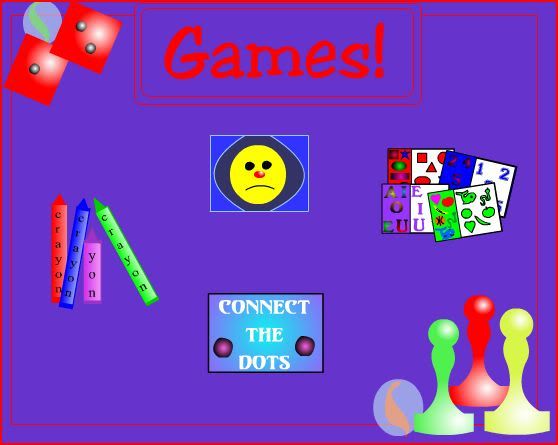

At this area, there are 4 games for children to choose from. The 4 activities are 'Lets see the whole rainbow', 'Lets play a feelings game', 'Puzzles' and 'Connect the dots'.
Moving on, the second part of the Fun For Brains segment is 'Julia's playroom!'
At Julia's Playroom, the children are free to click on anything in the room. Almost everything in the room can be clicked on. For example, click on the photo frame would change its colour, clicking on the switch would turn on and off the lights, clicking on the bear would make its mouth move. Also, not only will there be animations, there will also be sounds that match the animations. I feel that this is very exciting for a child as they are free to choose what they want to click on, and everything they click on has a reaction to it.
The last part of the Fun for Brains segment would be 'Poetic Videos'. At this corner, children are able to choose 1 out of 3 poems which will be read out to them. I feel that this is good for the younger children as they are still unable to read and are only able to listen and speak.
At all the pages, there will be a sidebar leading to other segments if the child is bored with the current game he or she is playing
I feel that this is good as the children are given choices and are able to make their own decisions.
Overall, i feel that this website is good for children to have web-based learning as it provides a variety of activities from math, science, art and craft, language arts and more.
Rating on the activities:
Colours
3/5
Might be too overwhelming for the children
Animation quality (Realism)
3/5
Animations are of quite poor quality
Context (Font size, Font, etc)
5/5
Font size and font used are both of appropriate style and size
Layout (Navigation)
3/5
There is a sidebar for easy navigation, however the sidebar is quite messy and does not have text to explain the where the links brings you to
Instructions (Rules, etc)
2/5
No proper instructions, however, the games are all quite user friendly and idiot-proof for adults. For children, perhaps having direct instructions would be beneficial.
Educational Purposes
4/5
Definitely has a positive impact on the children's learning
Overall Rating:
20/25
Tuesday, May 11, 2010
The VAK learning model was coined by Howard Gardner. VAK stands for visual(reading and seeing), auditory(listening and speaking) and kinesthetic(touching and doing). It is used to explain and understand the learning styles of others and yourself.
According to the VAK learning model, most people have a more dominant or preferred learning style in which they learn best with. However, there are a minority of people who learn best through a mix of all the 3 styles.
Visual learning style involves using sight to absorb most of the information. This can be done through the use of flip charts, videos, images, displays, models and more.
Five ways to access this learning style :
1. using power point slides
2. using imagery to teach
3. charts and models to explain points
4. writing out mind maps
5. print out hand outs
Auditory learning style involves the transfer of information through sounds, music, spoken word, noises and more.
Five ways to access this learning style :
1. videos
2. songs or music related to content being taught
3. using words to explain point
4. relating everyday sounds to topic being taught
5. listening to the teacher explain
Kinesthetic learning style uses the sense of touch and physical contact to learn. This can be done through practical lessons, hands on activities, touching and feeling things and more.
Five ways to access this learning style :
1. bringing subject to class and allowing hands on activities
2. practical lessons
3. using differently textured handouts
4. allowing taking down of notes while teacher is teaching
5. group work
